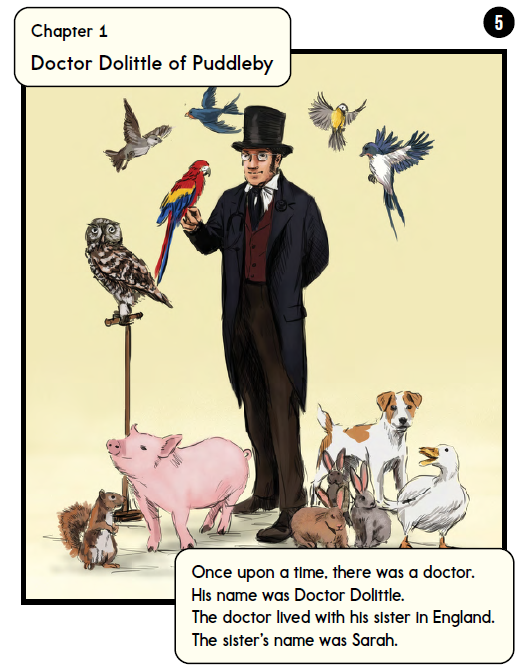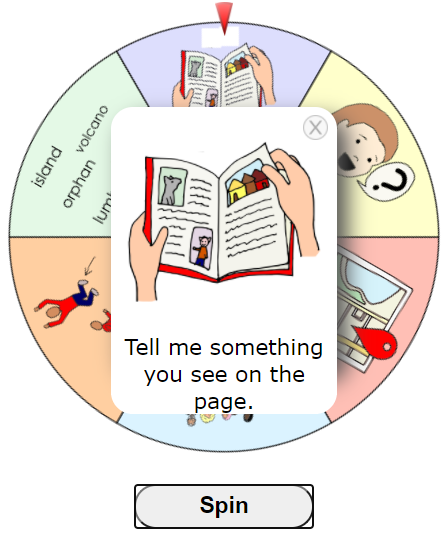
Using Reflective and Tell Me Questions as a Part of Shared Reading Instruction
by Beth Poss, M.A., CCC/SLP, M.S. Ed
Shared Reading is much more than just a read aloud. This evidence-based strategy focuses on the interactions between adults and learners as they read with the purpose of building language and literacy skills. During shared reading, adults explicitly model reading behaviors and engage learners in discussions about the text, including features of the print, illustrations and the content being read.
Interactions between adults and learners is a critical part of shared reading, including opportunities for questioning, responding, and discussing before, during and after the read aloud. Research on shared reading indicates that it is an effective component of reading instruction supporting the development of emergent literacy and language skills. (Erickson and Koppenhaver, 2021) Shared reading has a positive outcome on vocabulary, language, and phonemic awareness with students with and without disabilities (Davie and Kemp, 2002), (Fisher, Lamp, Frey 2008). This powerful strategy involves reading with (not to) students and connecting content to their personal knowledge and experiences.
But what kind of questions should educators ask? How do we engage learners with significant disabilities or complex communication needs in a meaningful discussion about a text?
To know where to begin, let's learn how to "Follow the CAR" and "Put the CROWD in the CAR". These two approaches structure shared reading for dialogic interactions with open ended questions and comments that promote discussion and participation. (Edmonton Regional Learning Consortium, 2016)

Follow the CAR reminds educators to
- Begin the discussion with a COMMENT, and then stop and give learners wait time to respond. “Wow, Dr. Dolittle sure has a lot of animals!”
- ASK a question, preferably an open ended question, and then stop and give learners wait time to respond. “What do you see in this picture?”
- RESPOND by adding more to the learners responses. “Yes, I see a pig, too. I also see a bird.”
Putting the CROWD in the CAR goes even further to emphasize open-ended questions as a part of shared reading.
- Completion: educators pause and leave a blank at the end of a sentence, students fill it in. This is typically used in books with repetitive phrases or rhymes.
- Recall: educators ask questions about what just happened during a reading, pausing to give learners and opportunity to respond.
- Open- Ended: questions that do not have a specific answer, “Tell me what’s happening in this chapter.” “What was your favorite part?”
- Wh-Questions- these may typically focus on pictures “What do you see here?” These can still be open-ended, as there may be multiple correct answers with which a learner can respond .
- Distance- Questions that build a bridge between the book and personal experience, “They ate coconuts. What food do you like to eat?”
To help engage learners consistently in strategies such as Follow the CAR and Put the CROWD in the CAR in a manner that is meaningful, educators can utilize a set of open-ended, predictable questions that can be asked and accessed in a fun and game-like manner, using custom printed dice or a digital spinner from LessonPix.
Tell Me Questions and Reflective Questions dice can be either be printed and put together or the images and text can be loaded into your LessonPix tray and used with the Play Tools spinner for a fun, interactive way of randomly asking learners open-ended questions as a part of your shared reading experience. Peers can be the question askers, too! When printed as a dice, learners can be given the opportunity to roll the dice and ask their peers the question they roll. When loaded in the tray and used with the spinner tool, learners can activate the spinner on the digital whiteboard in a physical classroom or, using the remote cursor control feature in Zoom and other distance learning tools in virtual settings.
Custom Dice Template from LessonPix
Play Tools Spinner from LessonPix
References:
Edmonton Regional Learning Consortium. “Shared Reading.” Literacy Instruction for Students with Significant Disabilities, 2016, http://literacyforallinstruction.ca/shared-reading/. Accessed 12 April 2021.
Davie, Juli & Kemp, Coral. (2002) A Comparison of the Expressive Language Opportunities Provided by Shared Book Reading and Facilitated Play for Young Children with Mild to Moderate Intellectual Disabilities, Educational Psychology, 22:4, 445-460, DOI: 10.1080/0144341022000003123
Erickson, Karen & Koppenhaver, David. (2020). Comprehensive Literacy for All: Teaching Students with Significant Disabilities to Read and Write.
Fisher, Douglas & Frey, Nancy & Lapp, Diane. (2008). Shared Readings: Modeling Comprehension, Vocabulary, Text Structures, and Text Features for Older Readers. Reading Teacher - READ TEACH. 61. 548-556. 10.1598/RT.61.7.4.


 Facebook
Facebook Twitter
Twitter Pinterest
Pinterest